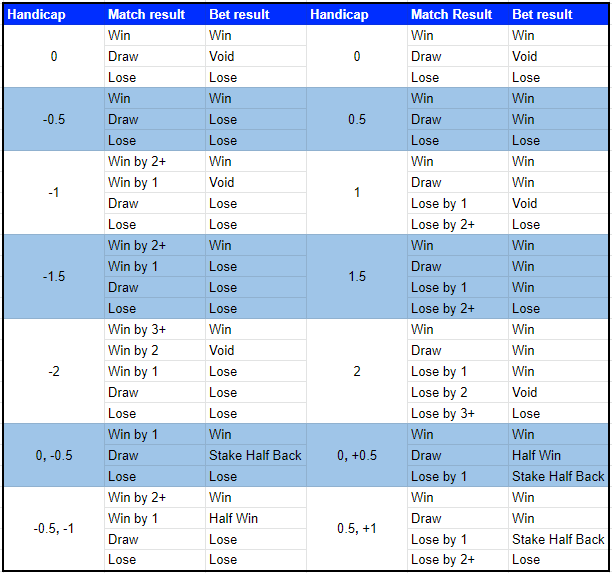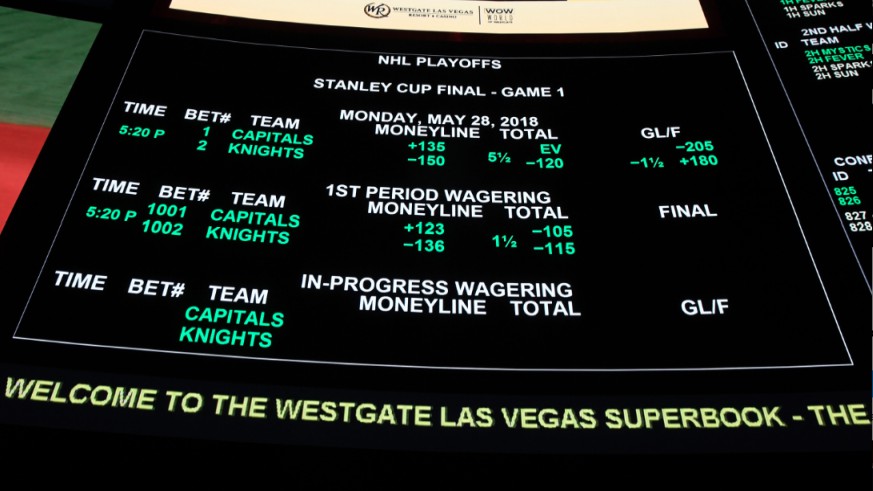2 1 Betting Odds Explained
- Betting Odds Explained Baseball
- 2 1 Betting Odds Explained
- 1/2 Betting Odds Meaning
- 2 1 Betting Odds Explained Horse Racing
If you want to come out on top against the bookies it is vital that you understand the fundamentals. When it comes to sports betting there is nothing quite as fundamental as the odds that the bookies offer. Unfortunately, betting odds can prove very confusing. That’s especially true for people who are new to betting.
Odds are simply the way prices and payouts are shown at a horse track. The numbers displayed as 4-7 or 2-5 tell you what you pay and how much you get back if the horse you bet on wins. The first number tells you how much you could win, the second number is the amount you bet. So, if the odds are listed as 2-1, you’ll get $2 for every $1 you bet. 1 to 2 odds or 1/2 is a way of displaying the decimal odds 1.5. In probablitiy terms, there is 2 in 3 chance of the selection winning. If you place a bet of £10 on odds of 1/2 and your selection wins, you will win £5 plus your stake of £10 will be returned. So the outcome would be £15.
Betting Odds Explained Baseball
That’s where this article comes in. We’re going to explain exactly how betting odds work, how they are set and the differences in the ways they are displayed. After taking in all the information below, you will be much better equipped to set about making some profit.
What Do Betting Odds Represent?
At their most basic, betting odds tell you two things:
- How much you stand to make should the selection win
- The probability of the selection winning
Take this example. If you were looking through the weekend Premier League fixtures and saw a team had fractional odds of 2/1 (that’s decimal odds of 3.0) you would know that you stand to win £2 in profit from every £1 that you stake should the team win. You’d also know that the bookmaker who set the odds ranks the team’s chances of winning as one in every three times the game is played.
If you saw a team had fractional odds of 8/13, you’d know that for every £13 you stake, you will win £8 or profit and that if the game was played 21 times in total, the bookies think the team would win 13 times and fail to win eight times (what is known as the implied probability).
Working out an implied probability percentage from fractional odds is simple. You just divide the stake by the combined sum of the two numbers which make up the fractional odds. In the case of 2/1 the equation looks like this:
1 / (2+1) = 0.33 or 33%
For odds of 8/13 this is the equation:
13 / (8+13) = 0.62 or 62%
That’s how the maths works but when it comes to the actual odds that bookmakers set, it’s a little more complicated.
How Do Bookmakers Set Their Odds?

The basic business model of a sportsbook is fairly uncomplicated. Bookmakers set the odds and take bets on an event. When that event ends they pay out everyone who backed the winner and then keep the rest for themselves.
2 1 Betting Odds Explained
But, consider the following horse race.
| Selection | Fractional Odds | Decimal Odds | Implied Probability | Profit From a £10 Bet |
|---|---|---|---|---|
| Horse 1 | Evens | 2.0 | 50% | £10 |
| Horse 2 | 3/1 | 4.0 | 25% | £30 |
| Horse 3 | 7/1 | 8.0 | 12.5% | £70 |
| Horse 4 | 7/1 | 8.0 | 12.5% | £70 |
As you can see, the combined implied probability of the selections above is 100%. From a bookmaker’s perspective that is a big problem. That’s because, presuming they’ve got the same amount of liability on each selection, they’d never make any money as they’d have to collect and payout the same amount.
So, the bookmakers will build something called an overround into their odds. Here’s a real example of a match odds market from a football match:
| Selection | Fractional Odds | Decimal Odds | Implied Probability | Profit From a £10 Bet |
|---|---|---|---|---|
| Man Utd | 1/2 | 1.5 | 66.7% | £5 |
| Draw | 18/5 | 4.6 | 21.7% | £36 |
| West Ham | 13/2 | 7.5 | 13.3% | £65 |

With an total implied probability of 101.7%, the bookmaker who set those odds is guaranteed to make a profit of 1.7% assuming that they have the same amount of liability on all three selections. Of course, it rarely works out that the bookies manage to spread their liability evenly but you need to know that when you look at a betting market you’re not simply looking at a reflection of how the bookies think the event will pan out. There’s much more going on behind the scenes.
Armed with this knowledge of how the bookmakers set their odds, you can concentrate on finding value. That is, finding a bet where you believe the odds (and therefore the implied probability) is too big. If the bookies think that a side has a 50% chance of winning but you think they’ve got a better chance than that, that’s value.
The Difference Between Decimal and Fractional Odds

You will have seen above that we’ve spoken about both fractional and decimal odds. They are just different ways of conveying the same information but they do add another layer of complexity.
All the major online bookmakers will shows their odds as both fractions and decimals so it’s important that you understand just what they are showing and how to switch between the two. Thankfully, it only requires simple maths.
To go from a fraction to a decimal is as easy as dividing out the fraction and adding one. Here’s how that looks for odds of 2/1:
(2/1) + 1 = 3.o
And using our second example from above, 8/13, it looks like this:
(8/13) + 1 = 1.62
If you want to go from decimal odds to fractional odds is similarly simple. You just minus one from the decimal odds, turn that number into a fraction and reduce it down to it’s simplest form.
Let’s take decimal odds of 4.5, this is the equation:
4.5 – 1 = 3.5
35/10 -> 7/2
If the decimal price is 1.25, you convert it into fractional odds like this:
1.25 – 1 = 0.25
25/100 -> 1/4
Here’s a list of some of the most common fractional odds and their decimal equivalents (for a more in-depth list click here).

| Fractional Odds | Decimal Odds | Implied Probability |
|---|---|---|
| 1/10 | 1.10 | 90.9% |
| 1/5 | 1.2 | 83.33% |
| 2/5 | 1.4 | 71.43% |
| 1/2 | 1.5 | 66.67% |
| 1/1 (evens) | 2.0 | 50% |
| 3/2 | 2.5 | 40% |
| 2/1 | 3.0 | 33.33% |
| 4/1 | 5.0 | 20% |
| 9/1 | 10.0 | 10% |
| 100/1 | 101.0 | 0.99% |

1/2 Betting Odds Meaning
Key Terminology
When reading betting advice or searching for a value bet on the bookies’ websites you’ll come across some key terms relating to betting odds. To round up our article on betting odds, we’ve covered the most widely used terms to ensure you don’t get confused in your search for winners.
Stake – The amount of money that you place (or wager) on a specific bet.
Price – The price of a bet is simply another way of referring to the odds. You can either say that a football team can be backed at odds of 2/1or that their price is 2/1.
Odds On & Odds Against – Two of the key terms that you’ll hear when it comes to betting odds are ‘odds on’ and ‘odds against’. These terms refer to whether a price is greater or lower than evens. Any price above evens is known as odds against, while anything below evens is odds on.
Short and Long Odds – If something is described as being short odds it means the price is low. A long odds shot will provide you with a bigger win but is much less likely to win.
“Wait, why does this NFL team have a -235 next to its name? What’s with New England Patriots (-15) vs. Miami Dolphins (+15)? Help! HEEEELPPPP!”
If that sounds like you, we’re here to assist you. If you’ve stared at a board at a sportsbook or just seen spreads and moneylines on the Internet and been utterly confused, don’t worry. It’s not just you. Those numbers can be confounding.
But hopefully, once you’re done reading this, you’ll completely understand how they work. As you prepare to dive into the world of sports betting, here’s a breakdown of how the lines work, starting with …
Spreads
It would be really easy to bet on a game if you could put money on a heavy favorite to win.
That’s where point spreads come in. Let’s look at an example:
Philadelphia Eagles (-4.5)
New York Giants (+4.5)
In this case, you can bet on either two outcomes: you can put money on the Eagles to win the game by 4.5 points OR MORE, which makes them the favorites. Or you can bet that the Giants will either win or lose by LESS THAN 4.5 points. They’re the underdogs.
Now, sometimes the spread “moves” during the days leading up to the game. Perhaps the Eagles’ spread ends up being -3.5 (in which they must win by 3.5 points or more to give you a victory in your bet). Your bet all depends on whichever spread you bet on, whether it was when the Eagles were favored by 4.5 or 3.5 points.
If you ever see “PK” or “pick” next to a team, it means there’s no spread and you can bet on who will win, no matter what the score is.
Moneylines
Let’s take that same example above but use moneylines:
Philadelphia Eagles (-200)
New York Giants (+150)
2 1 Betting Odds Explained Horse Racing
The team with a minus symbol is the favorite, and the number is how much money you would need to bet to win $100. In this case, you would have to bet $200 on the Eagles in order to win an additional $100.
The Giants are the underdogs. If they’re +150, that means you could bet $100 to win $150.
Note that you can bet any amount you want, but those numbers are always calculated and posted the same way, either in how much money you would need to wager to win $100 or how much money you could win by wagering $100.
Odds
If you’re betting on something like the team who will win the Super Bowl in the future, you might see it look like this:
New England Patriots — 3/1
Baltimore Ravens — 5/1
Kansas City Chiefs — 8/1
If you were betting on the Patriots and their 3/1 odds, you would win $3 for every $1 you spend. So if you bet $50 on the Pats and they ended up winning the Super Bowl, you’d win $150 (plus your original wager) back.
Good luck!